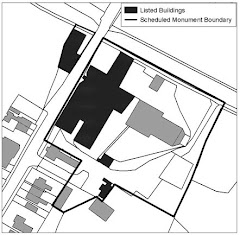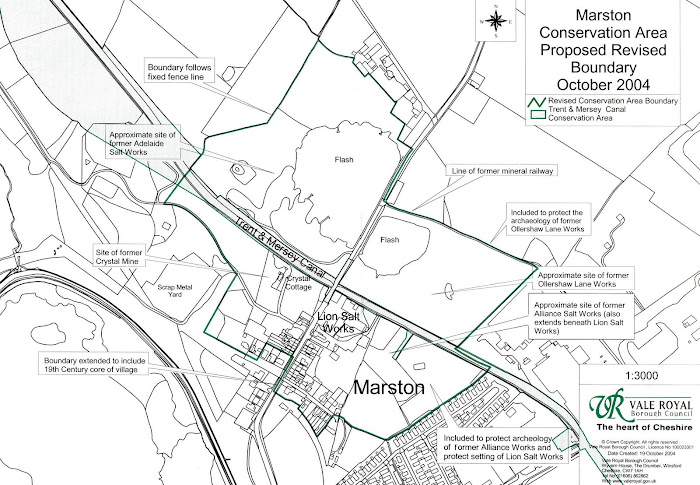 The project received an important visitor at the early stages of the restoration work when the CEO of English Heritage, Simon Thurley made a visit to the Lion Salt Works on 30th July, 2009.
The project received an important visitor at the early stages of the restoration work when the CEO of English Heritage, Simon Thurley made a visit to the Lion Salt Works on 30th July, 2009. The starting point for the visit was Pan House 3.
Left to right: Henry Owen-John, Steve Woolfall, Emma Burkitt, Simon Thurley, David Roberts.
Simon Thurley was accompanied by Henry Owen-John, Planning & Development Regional Director North West and Graham Ives, Historic Areas Advisor North West Office of English Heritage. Also joining the morning briefing and site tour was Sarah Hilton, Head of Heritage Lottery North West.
The historical background and archaeological importance of the site and the process of salt making was given by Andrew Fielding. Steve Woolfall, Museums, Heritage and Tourism Manager, Cheshire West and Chester Council described the vision for the site after the buildings are restored and the role Lion Salt Works will make in the portfolio of heritage and recreational facilities being established in the Weaver Valley. Emma Burkitt, Project Manager, Turner and Townsend and John Simons, Donald Insall Associates outlined the enabling works and the philosophy being employed it carrying out the works.
Simon Thurley and Henry Owen-John ponder the challenging task of restoring the pan houses which are impregnated with salt
Salt was wheeled through this door from the pan house to the Stove House where the saltblocks were dried before being lofted to the warehouse above.
Salt was wheeled through this door from the pan house to the Stove House where the saltblocks were dried before being lofted to the warehouse above.
The group walked around the main pan house buildings to the canal side and the brine tank.
The large timber leaning against the north wall of Stove House 5 is part of a collapsed headstock. This lattice tower collapsed when salt corrosion eroded the metal fastenings which held the timbers together.
Such structures are iconic of this type of site.
The briefing meeting was an important one at the very early stages of the project.










